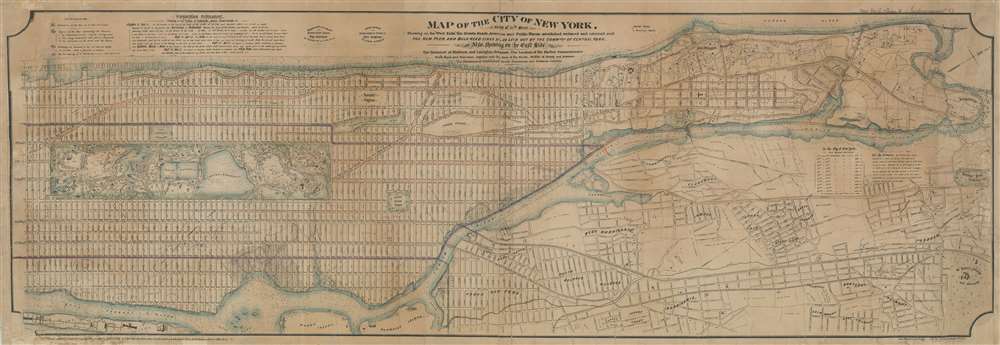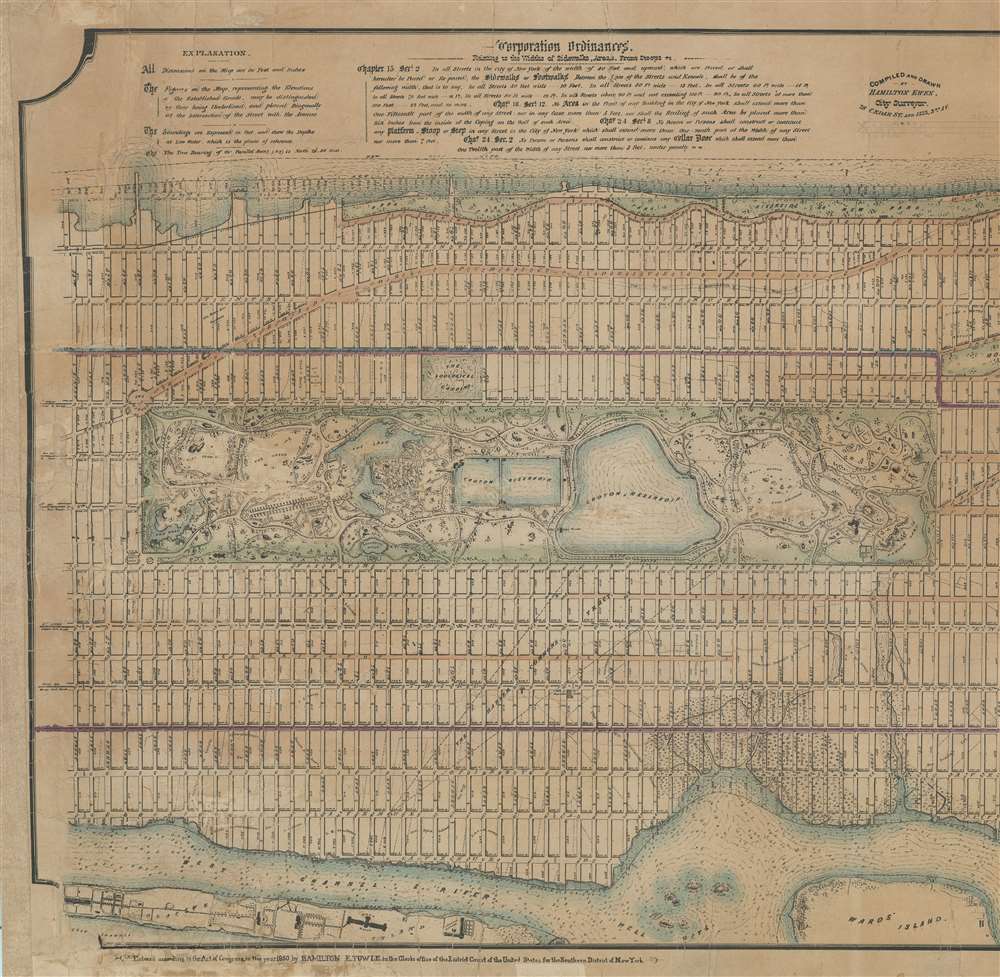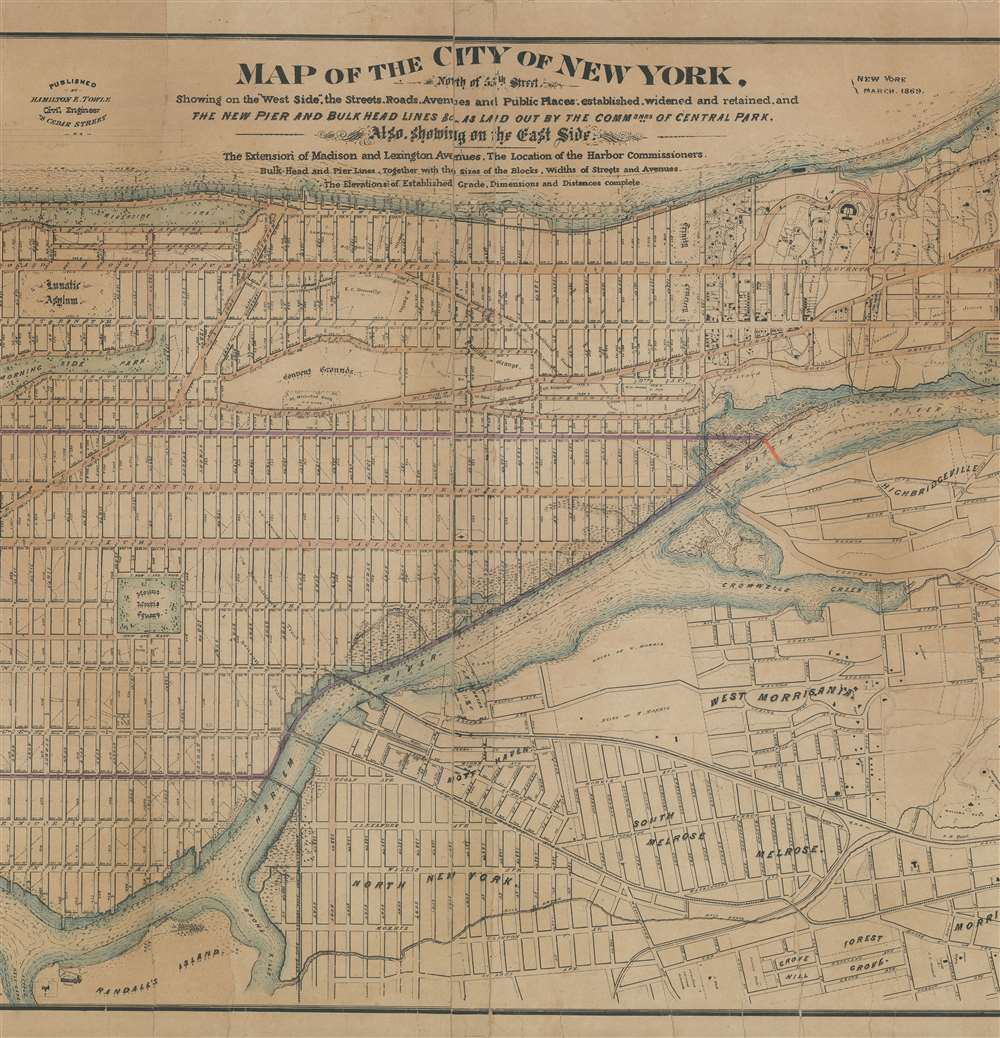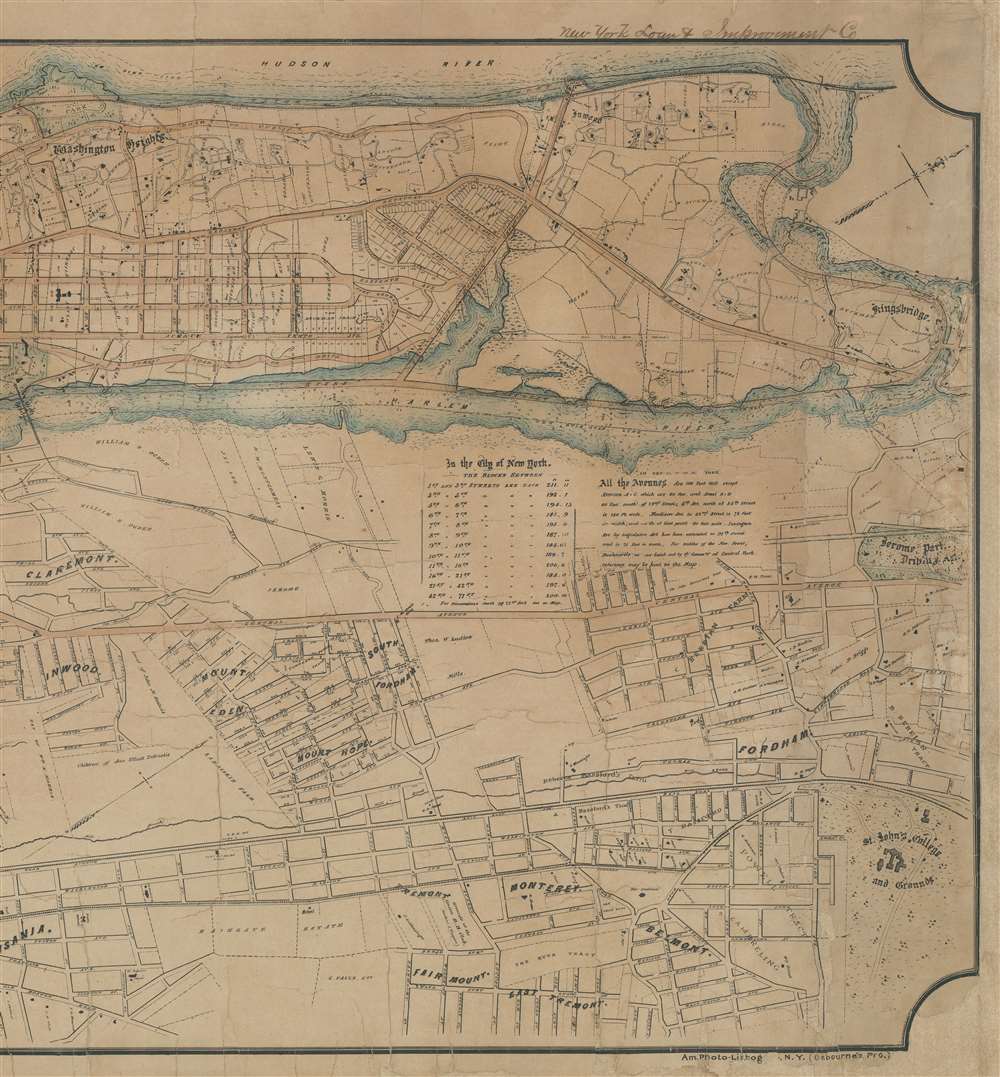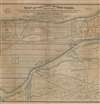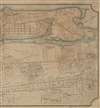This item has been sold, but you can get on the Waitlist to be notified if another example becomes available, or purchase a digital scan.
1869 Ewen / Towle Map of Manhattan, New York City, North of 55th St.
NewYorkCityNorth-ewen-1869
Title
1869 (dated) 23.25 x 67.25 in (59.055 x 170.815 cm) 1 : 8448
Description
The Green Plan
This is one of the earliest maps to illustrate Central Park Commission leader and city comptroller Andrew Haswell Green's (1820 - 1903) plans for Manhattan north of 55th Street, and a such is one of the earliest maps to illustrate plans for Riverside Park. Green's plans included the development of Riverside Park, and a network of parks linking Central Park and the Upper West Side to the highlands of upper Manhattan: Riverside Park, Morningside Park, and St. Nicholas Park (Convent Grounds).A Commercial Venture
The map is partially derived from an earlier map published one year earlier, in 1868, by Towle that covered the same area east of 5th Avenue, but did not include the Upper East Side. Scientific American described that map as 'a valuable guide to persons desiring to purchase desirable lots in this Babylon of the Western Hemisphere', suggesting that this map, and this one, was a commercial rather than official production, intended for use in real estate development and speculation. A note in the upper right add provenance to this piece, 'The New York Loan and Improvement Co.,' a real estate speculation firm run by Charles Tracy Barney.Publication History and Census
This map was surveyed and drafted by Hamilton Ewen and published in 1869 by Hamilton E. Towle. It was printed by the American Photo-Lithographic Company using the Osborne Process. This map is rare with the only other known example being in the collections of the New York Public Library.CartographerS
Hamilton Ewen (1838 - December 15, 1893) was a surveyor and draftsman active in New York City in the late 19th century. He born in Brooklyn and active as a private surveyor in New York City from at least 1863. He was employed by New York City from about 1867 to at least 1892 and is associated with many important New York civic improvement projects, among them street widening, grading work, and new street construction. More by this mapmaker...
Hamilton Ela Towle (June 24, 1833 - September 2, 1881) was an American civil engineer active in New York, Austria, Colombia, and Boston in the late 19th century. Towle was bornin in Lee, New Hampshire. He developed an interest in Civil Engineering in 1848, working under the engineer W. Q. Down for the Portsmouth and Concord Railroad. After several years at the Portsmouth Rail Yard, Towle worked for one year at the Pensacola Navy Yard. He decided to pursue a formal education in Civil Engineering and enrolled in Harvard University's Lawrence Scientific School. After two years of study, he accepted a position as assistant engineer at Fort Montgomery on Lake Champlain. In 1857, he moved to Austria to accept a supervising position at the Danube River dry-docks. On his return to the United States upon the expiration of his Austrian contract, he was involved with the Great Eastern disaster of 1861. Apparently the Great Eastern, 2 days out from Liverpool, lost its port paddlewheel, leading to other significant damage. Towle devised a plan to regain control of the rudder, thereby saving he ship and all aboard. After saving the Great Eastern, which garnered Towle considerable fame, he relocated to Boston, establishing himself as a private Civil Engineer. He worked on various mining and railroad contracts before moving to New York City where he published several maps associated with the historic urbanization of Upper Manhattan. In 1874, he took a contract for the Columbian government to complete a study of the Magdalena River. Although unverified, he probably contracted malaria (or some other tropical disease) in Colombia, as from this point forward, his heath began a steady and precipitous decline. In 1877, he traveled to Europe for his 'health,' completing a prolonged tour and returning to New York in 1878, but traveling again to Europe shortly thereafter. He died at the home of his son-in-law in Upper Norwood, not far from London, in 1881. Towle, though accomplished, was just 49 when he died. Learn More...
American Photo-Lithographic Company (1866 - c. 1884) was a Brooklyn, New York based lithography house active in the late 19th century. By the 1870s they had relocated to Fulton Street, in Manhattan. Early on, the firm was best known for its use of the Osborne Process, an economical photo-mechanical technique for making lithographic plates invented by Irish-Australian John Walter Osborne (1828 - 1902). Osborne may have been the owner or one of the co-founders of the American Photo-Lithographic Company, as he certainly had moved to New York City by this time to market his technique. He is known to have worked for the American Photo-Lithographic Company in both New York and Washington D.C - but the relationship remains unclear. Later the embraced other more advanced printing techniques. By 1877, the firm opened an annex office in Boston under Clement Drew, which it retained until 1879. We have identified no work by the American Photo-Lithographic Company postdating 1884. The firm should not be confused with the American Lithographic Company, which was founded by 1892. Learn More...

